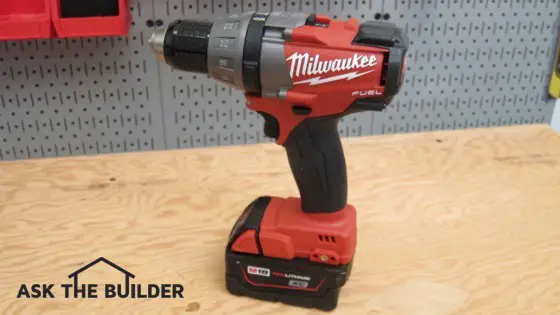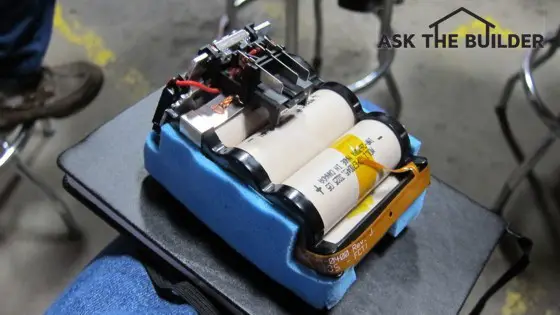Cordless Power Tool Batteries
DEAR TIM: I'm considering getting some new power tools and wonder if the cordless tools I see really live up to all the marketing hype. I find it so hard to believe that a battery-powered tool can deliver the torque and power that I'd get from a traditional power tool powered by 120-volt electricity. I used a cordless tool years ago and the battery just didn't last long and it seemed weak. Do you own cordless tools, and more importantly, do you use them for tough jobs? Alicia M., Boulder, CO
DEAR ALICIA: I've got news for you. You absolutely want to give cordless power tools a serious look. Don't allow your past experience with cordless tools to taint the performance of the new tools. There have been enormous advancements in battery and tool technology that make these new power tools serious contenders.
First and foremost, I own a wide assortment of cordless power tools. I've had them for nearly two decades. I'll agree that the first generation or two of cordless batteries left me hopeful for better performance. I put up with lackluster performance to be free of the electric cord in certain situations.

Here's an example of the latest cordless power tools. Just a week ago, I used a powerful cordless impact driver to remove a few porch railings on a lower deck of mine. To do this job with a traditional corded tool, I would have had to drag to the back of the house a long extension cord to provide the power. For safety's sake, that cord would need to be plugged into a GFCI outlet to protect me in case the dew from the grass tried to short out the cord or the tool.
Instead, I grabbed my cordless impact driver and was working within seconds with no fear of electrocution. I didn't have to waste the time or energy futzing around with a power cord. Suffice it to say the railings all came off and the battery was not exhausted at all. My cordless impact driver is a must-have tool for me.
The latest technology in cordless tool batteries is lithium. This natural element is the lightest of all metals, and it's rapidly become the gold standard of cordless battery anatomy. You'll find lithium in the battery cells of the top cordless tools that you look at.
But there's much more to it than just what's inside the battery cells. Leading cordless tool manufacturers build their batteries differently than others. Heat buildup in a cordless tool battery is not good for the battery. This is why certain manufacturers go to great lengths to design the inside of the batteries so the cells are slightly separated, nest in trays to create an air space and are heavily protected from damage in case you drop a battery pack.

This is what the inside of a typical cordless tool battery looks like. The round cylinders are not rolls of coins. Those are the actual power cells. Photo Credit: Tim Carter
Furthermore, the leading tool companies have started to include electronics in the form of tiny circuit boards that help manage the power output of the batteries so that the tool motor is protected as well as the batteries. The tools are smart and have internal protection in case you try to work the tool too hard. Cheaper cordless tools will actually burn up in your hands because they don't have this overload protection.
The fascinating thing about the cordless tools and the batteries is that two tools that look the same and have the same voltage can produce strikingly different performance results. This is why it's imperative that you take the time to read high-quality tool reviews that cut through some of the marketing hype.
I can tell you for a fact that the internal electronics that are found in some cordless tool batteries absolutely enhance their run time and the actual power delivered. Realize that to get maximum run time and power, you have to couple the battery with a state-of-the-art motor that doesn't waste the battery power.
As with most things, you'll quickly discover that the sales price of the tool will almost always communicate to you which tool has the best batteries and internal components. It costs money to create a great cordless tool motor and a battery with the latest technology. That's why the top tools cost more.
Less expensive tools often may have the magic word lithium on the box, but that doesn't mean the battery is the best nor does it mean the tool possesses a sleek motor that will perform for years with no burn out.
The higher the voltage of a cordless tool, the more power it has. That's a fact. But here's the amazing thing. I recently was at a tool conference where a 12-volt cordless tool performed as well as an 18-volt tool. It's all a matter of how the motor, electronics, gearing and battery are combined. Twelve-volt cordless tools might be perfect for you because they are lighter in weight and fit the hands of a woman better.
If at all possible, try to watch videos of the tools in side-by-side tests. Try to see if you can use a cordless tool at a store before you commit to buying it. Read independent tool reviews that address battery life. Look for batteries that have fuel gauges on them.
One thing is for sure. If you spend the money on a high-quality tool, you'll get the power you need and long battery life.
You can watch videos of cordless power tools in action at www.AsktheBuilder.com. Simply type "cordless saw drill" into the search engine.
Column 941
3 Responses to Cordless Power Tool Batteries